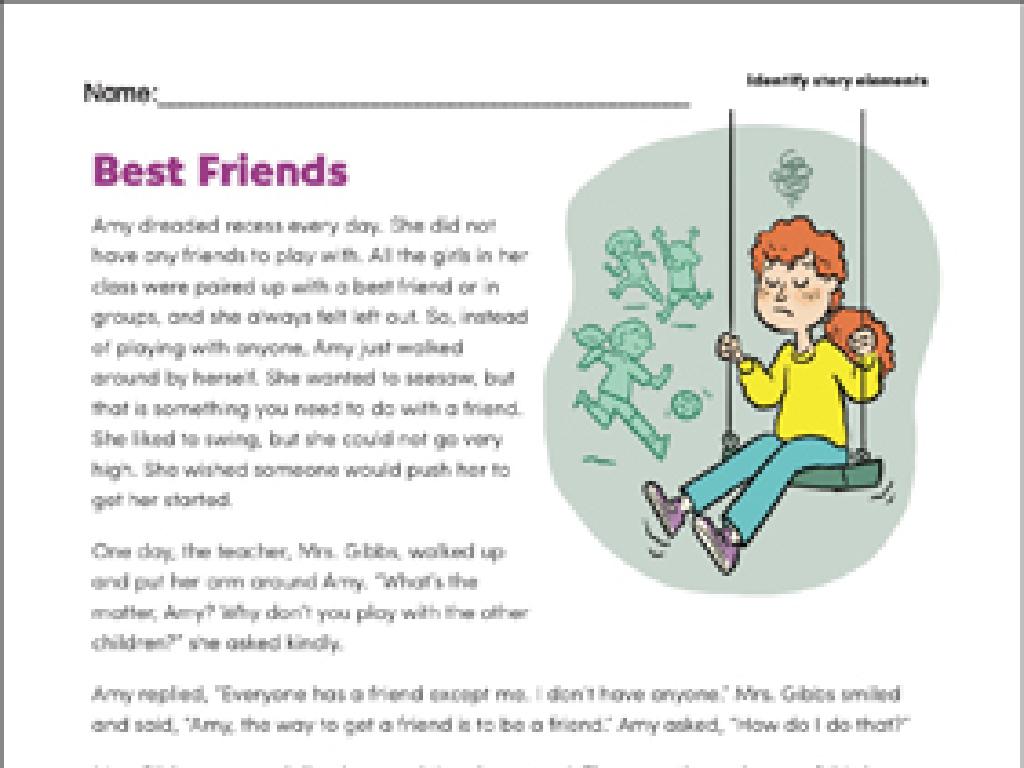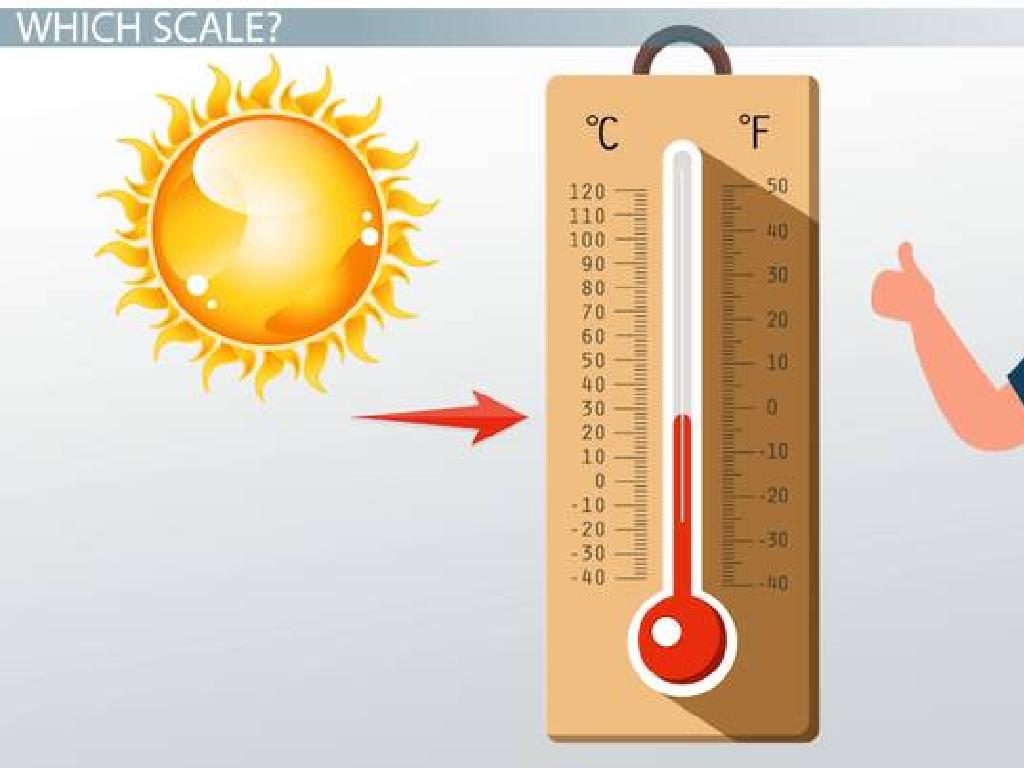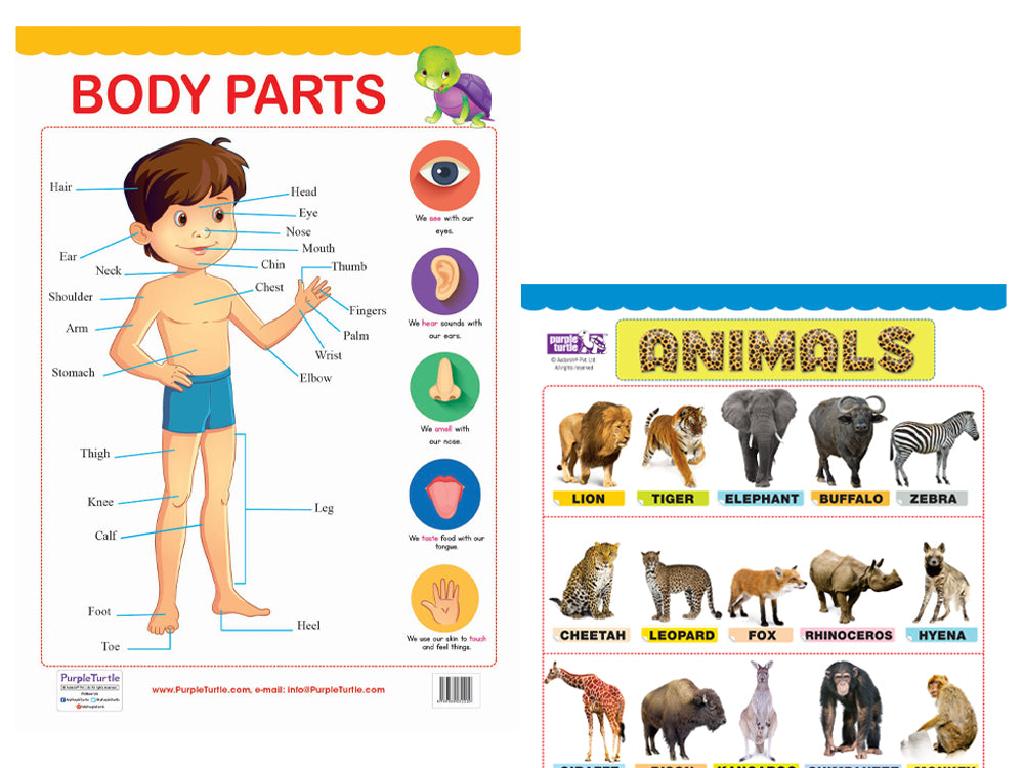Correct Capitalization Errors
Subject: Language arts
Grade: Fifth grade
Topic: Capitalization
Please LOG IN to download the presentation. Access is available to registered users only.
View More Content
Mastering Capitalization
– Importance of capital letters
– Capitals mark the start of sentences & proper nouns
– Today’s goal: Fix capitalization errors
– We’ll identify & correct mistakes in texts
– Steps to become capitalization experts
– Learn rules for capitalization with examples
– Practice makes perfect
|
This slide introduces the concept of capitalization, emphasizing its importance in writing. Capital letters are essential for marking the beginning of sentences and for proper nouns, which include names of people, places, and specific things. Today’s lesson will focus on identifying and correcting common capitalization errors. By the end of the lesson, students should be more confident in their ability to use capital letters correctly. Encourage students to practice by writing sentences and checking each other’s work for capitalization accuracy. Provide examples of incorrect sentences and guide them through the process of making corrections.
Mastering Capitalization
– Understanding capitalization
– Capitalization means using a big letter (A, B, C, …)
– Capital letters start sentences
– Every sentence begins with a capital letter
– Capitalize names, places, titles
– Always use capital letters for people’s names, cities, and books
– Importance of correct capitalization
|
This slide introduces the concept of capitalization to the students. It’s important to emphasize that capitalization is not just a rule but a way to show respect and importance to certain words. Start by explaining what capitalization is and then show examples of where capital letters should be used, such as the beginning of sentences, proper nouns, and titles. Use visual aids or text examples to highlight these rules. Encourage students to practice by writing sentences and identifying proper nouns that need capitalization. This foundational skill in writing helps ensure clarity and proper etiquette in their communication.
Capitalization Rules
– Capitalize sentence starters
– The first word in a sentence always needs a capital letter.
– Capitalize names and titles
– Always use a capital letter for people’s names like ‘Mrs. Smith’.
– Capitalize days, months, holidays
– Remember, ‘Thursday’, ‘January’, ‘Christmas’ start with capital letters.
– Capitalize specific places
– ‘Mount Everest’, ‘Lincoln High School’ are capitalized.
|
This slide introduces students to the basic rules of capitalization. Emphasize the importance of always starting sentences with a capital letter. Explain that people’s names and titles show respect and therefore require capitalization. Highlight that days, months, and holidays are special time markers that are capitalized, but seasons are not because they are general time periods. Lastly, specific places and institutions are unique names and need to be capitalized. Provide examples for each rule and encourage students to correct sentences with capitalization errors. This will help them remember the rules and apply them in their writing.
Capitalization Detective: Spot the Errors
– Find mistakes in a paragraph
– Capitalize sentence beginnings
– Sentences always start with a capital letter.
– Names, places, titles need caps
– Always capitalize proper nouns like ‘Mount Everest’ or ‘President’.
– Become a capitalization detective
|
This slide is aimed at engaging students in an interactive activity where they act as ‘Capitalization Detectives’ to identify capitalization errors in a given paragraph. Encourage them to look for sentences that begin with a lowercase letter, which is a common mistake. They should also be on the lookout for proper nouns, including names of people, cities, countries, and titles, which should always be capitalized. This activity will help reinforce the rules of capitalization in a fun and practical way. As they find errors, have them explain why a capital is needed, reinforcing the rules of capitalization. This will prepare them for writing correctly capitalized sentences in their own work.
Correcting Capitalization Errors Together
– Review errors in capitalization
– Discuss the need for capital letters
– Capital letters start sentences, proper nouns, titles, etc.
– Practice rewriting with correct capitals
– Use a paragraph from a class book or a student’s work
– Aim for capitalization perfection
|
This slide is aimed at engaging students in a collaborative review of capitalization errors they have identified. Start by revisiting the errors and then open a discussion on why certain words require capitalization, such as the beginning of sentences, proper nouns, titles, and days of the week. Provide a paragraph with common capitalization mistakes and have the students work together or individually to rewrite it correctly. Emphasize the importance of practice in mastering the rules of capitalization. As an activity, students could exchange their work with peers for peer review, further reinforcing their learning through teaching others.
Your Turn: Capitalization Challenge
– Receive a worksheet with sentences
– Spot and correct capitalization errors
– Look for the start of sentences, names, places, and I
– Recall today’s capitalization rules
– Use what we learned about proper nouns, days, and months
– Demonstrate your understanding
|
This activity is designed to reinforce the capitalization rules covered in today’s lesson. Distribute the worksheets to the students and instruct them to carefully read each sentence, looking for capitalization mistakes. Remind them to pay special attention to the beginning of sentences, proper nouns, days of the week, and months of the year, as well as the pronoun ‘I’. After they have completed the worksheet, review the answers as a class to ensure understanding. This exercise will help students apply the rules in a practical context and demonstrate their grasp of correct capitalization.
Class Activity: Capitalization Scavenger Hunt
– Team up for a scavenger hunt
– Find capitalization in the classroom
– Look at books, posters, and labels
– Record your capitalization examples
– Explain why each example is capitalized
– Is it a name, place, or a start of a sentence?
|
This activity is designed to help students recognize the use of capital letters in different contexts within their immediate environment. Divide the class into small groups and instruct them to search the classroom for examples of correct capitalization. They should look at various items like books, posters, and labels. Each group will write down the examples they find and discuss why capitalization has been used. For instance, the beginning of sentences, proper nouns, titles, etc. After the hunt, each group will share their findings with the class. This will reinforce their understanding of capitalization rules and why they are important. Provide guidance and clarification as needed during the sharing session.
Capitalization Review & Reflection
– Recap capitalization rules
– Remember to capitalize the first word of a sentence, names, and places.
– Share scavenger hunt findings
– What interesting capitalization did you find?
– Discuss capitalization importance
– Proper capitalization guides the reader for proper nouns and beginnings of sentences.
– Reflect on learning outcomes
|
This slide aims to consolidate the students’ understanding of capitalization rules. Begin by recapping the key rules of capitalization, such as starting sentences with a capital letter and using capitals for proper nouns like names and places. Encourage students to share unique or challenging examples they found during their scavenger hunt activity. Discuss how correct capitalization aids in reading comprehension, signaling the start of new sentences and highlighting specific nouns. Conclude by reflecting on how their understanding of capitalization has improved and why it’s important in writing. This reflection will help reinforce their learning and the practical application of capitalization in everyday reading and writing.
Capitalization Homework: Craft Your Story
– Write your own short story
– Use 10 capitalization rules
– Capitalize names, places, days, etc.
– Include characters, setting, plot
– Share your story next class
– Practice reading aloud for confidence
|
This homework assignment is designed to reinforce the capitalization rules learned in class by applying them in a creative context. Students are tasked with writing a short story, which should include at least 10 of the capitalization rules discussed, such as capitalizing proper nouns, the first word of a sentence, days of the week, and names of specific places. Encourage students to be imaginative with their characters and plot to make the exercise enjoyable. Remind them to proofread their work for capitalization errors. In the next class, students will have the opportunity to share their stories, which will help build their public speaking skills and allow them to see how their peers applied the rules.






